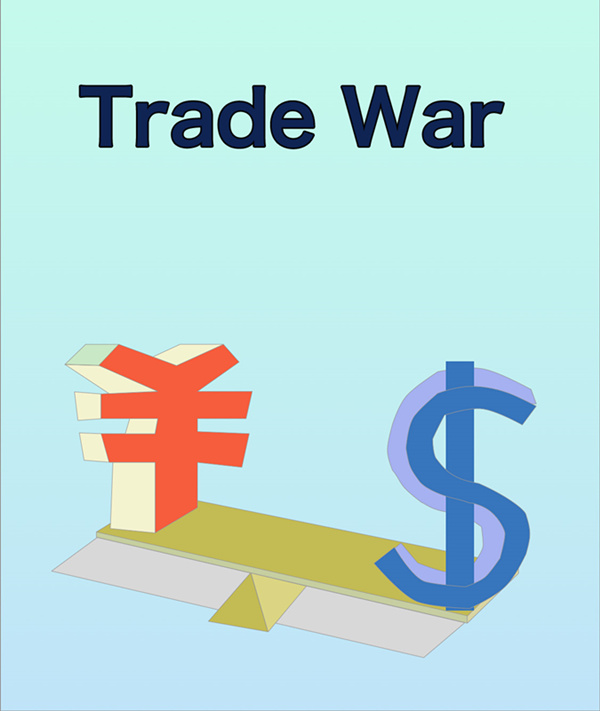Trade War Can’t Solve Trade Imbalance between China and United States
May 25,2018

By Long Guoqiang, DRC
2018-4-2
After the Sino-US relations moved to a new stage, the role of economic and trade cooperation, which serves as a “stabilizer” between relations of the two countries, has become even more important than before. The US trade deficit with China can directly influence the US trade and economic policy on China. According to the US statistics, the US trade deficit in foods with China reached $375.2 billion, accounting for 46% of the total US trade deficit in goods. For this reason, the Trump administration has adopted various protectionist measures of trade and investment against China’s export and investment in the US, launched an investigation into China’s acts under Section 301 of the trade Act of 1974, refused to abandon the method of “surrogate country” in the anti-dumping investigations, and requested China to take measures to reduce the bilateral trade deficit by $100 billion. However, the current method put forward by the United States to solve the bilateral trade imbalance is not feasible.
First, the trade war is not a feasible way to solve the trade imbalance between China and the United States. The causes leading to trade imbalance between China and the US is complex. Therefore, in order to solve the problem, we must first find out the main reasons and take targeted measure so as to achieve effective results. The US believes that one major reason causing the bilateral trade imbalance is the “unreasonable and unfair” policy of the Chinese government which enables Chinese enterprises to gain international competitive advantages, and the other reason is due to China’s protection of its domestic market. Based on the above judgment, the US has taken a series of protectionist measures on trade and investment. First, it hopes to weaken China’s export competitiveness to the US and reduce China’s export to the US; second, it hopes to force China to open its market and expand American exports to China; third, it hopes to strengthen the protection of American intellectual property rights and maintain the leading technology advantages of US enterprises. China will inevitably take countermeasures against the unilateral trade and investment protection measures of the United States. Although the Chinese government has repeatedly expressed its desire not to fight a trade war, it must resolutely fight back when its legitimate interests are unfairly treated. If a trade war breaks out between the two largest trading partners, the interests of enterprises and consumers on both sides will be damaged, and global economic and trade will also be affected. The unilateralist approach of the United States will pose serious challenges to the multilateral trading system and exert far-reaching and adverse effects in the world. Therefore, there will be no winners in the trade war, nor can it solve the problem of bilateral trade imbalance.
Second, it’s hard for China’s inclusive open market to solve the bilateral trade imbalance between China and the United States. China’s further opening to the outside world has brought huge market opportunities to all its trading partners, including the United States. Since the turn of the new century, China has witnessed the fastest growing import from the US. The US export volume to China rose from 2.07% in 2000 to 7.96% in terms of its total export share. This should be attributed to China’s opening market on a larger scale and increased amount of import. But the competitiveness of the American enterprises are not strong enough compared with the enterprises of some other countries in China’s import market, and that is the main reason for the widening trade imbalance between China and US. Therefore, China’s inclusive open market will have a limited effect on reducing the huge trade deficit between the United States and China. China’s further efforts to lower the threshold of market access will bring new market opportunities to its economic and trade partners, including the United States. It should be noted that the main competitors of American enterprises in China’s import market are enterprises of other developed economies rather than Chinese enterprises. If American enterprises can’t sharpen their own competitive edge and the Trump administration insists on fighting a trade war, the inclusive open market of China will only bring benefit to other countries.
Third, a balanced and stable Sino-US trade development needs to be based on the establishment of institutional arrangements and the building of Sino-US bilateral free trade arrangements, so as to push forward the smooth development of Sino-US economic and trade relations. First, the Sino-US free trade arrangements will provide a more favorable treatment for enterprises of both sides in each other’s market. Second, the Sino-US free trade arrangements will provide a stable institutional environment for Chinese enterprises to invest and trade in the US. Third, the Sino-US free trade arrangements will help release the huge potential for Sino-US cooperation which can benefit both sides. Therefore, both China and the United States should focus on cultivating a stable Sino-US relation and put the free trade negotiation on the agenda as soon as possible. The Sino-US Bilateral Investment Treaty (BIT) has laid a good foundation, so both sides can start from resuming the BIT negotiation and build Sino-US free trade zones in different stages.














